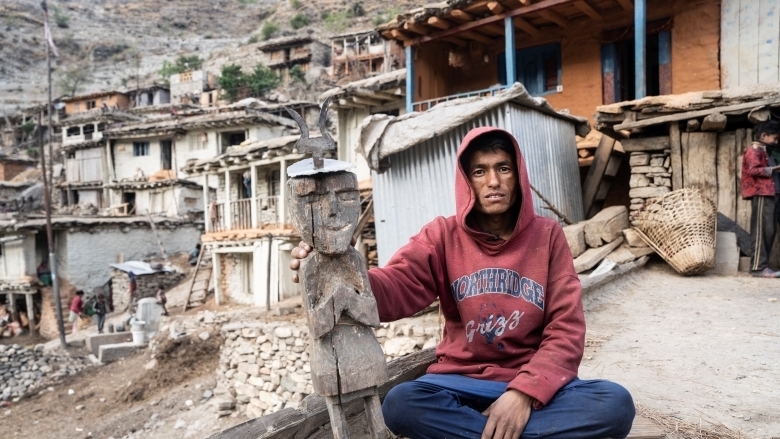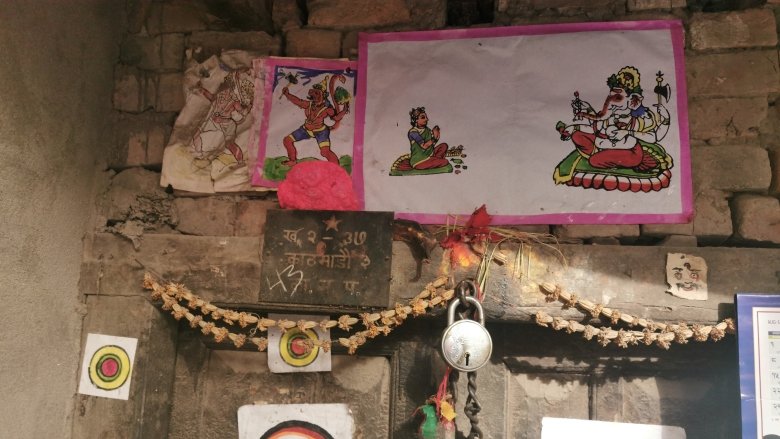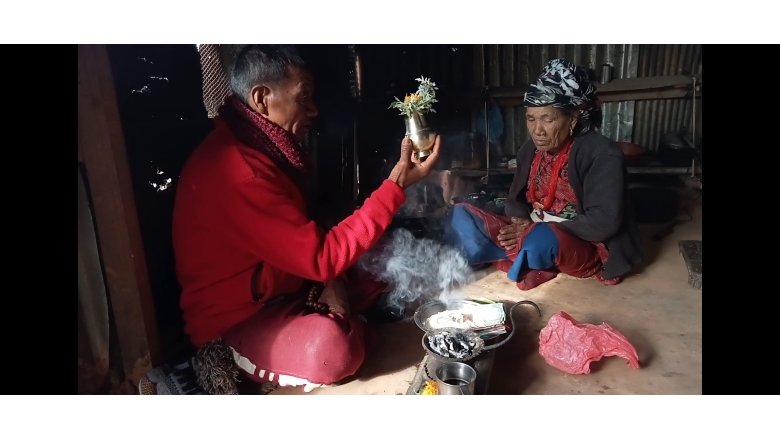The creative sector has gained recognition as a generator of jobs and livelihoods, and for its promotion of cultural inheritance and social capital. Creative industries not only contribute significantly to GDP (in direct measurable ways) but also employ the most vulnerable in the community. However, there is often a divide within the industry, with women and marginalized groups concentrated in what is labeled as traditional, craft-based enterprises, and limited numbers found in the more lucrative and socially recognized parts of the industry, such as the contemporary arts.
The Kathmandu Triennale, Nepal’s platform for global contemporary arts, is helping disrupt this dichotomy between traditional and contemporary arts, by recognizing and promoting the skill, aesthetic value, and cultural significance of artistic practices of indigenous communities and marginalized groups. With support from the World Bank, the Kathmandu Triennale undertook research that highlights the cultural significance of vibrant artistic practices found in a number of indigenous and local communities in Nepal, thus showcasing the ever-evolving nature of cultural heritage and knowledge.
The Kathmandu Triennale, Nepal’s platform for global contemporary arts, is helping disrupt this dichotomy between traditional and contemporary arts, by recognizing and promoting the skill, aesthetic value, and cultural significance of artistic practices of indigenous communities and marginalized groups.
One such story is that of artist Nanda Lal Bhinyal. In the village of Duma, Mugu, in far-western Nepal, Nanda Lal Bhinyal continues the craftsmanship of making Dadye, an anthropomorphic sculpture usually carved out of Himalayan cedar and pine, considered a protective figure to ward off evil. An artistic practice that has long been integral to indigenous belief systems in the area, Dadyes are found atop homes, shrines, temples, and other places of worship, throughout the Karnali region.
Most carvers are from the local Dalit community, arguably the most marginalized communities in Nepal, and such carving is an important part of their role in the community. The lack of formal recognition of these artists and the labeling of the art itself as “traditional” has enabled a form of art “looting”, with many pieces being stolen or sold off much below their worth in the Kathmandu tourist trade and foreign art markets.
Similarly, woodblock printmaking in the Kathmandu valley is an old but under-recognized art form, associated with the Chitrakar community, part of the Newar indigenous community. Chet Kumari Chitrakar is one of the last women to continue the practice in her community. A tradition started in the 17th century, block printed posters and prints of gods and goddesses are still found in bazaars every festival season. However, the intricate, time-intensive nature of this work has been overtaken by readymade offset and digital prints. While new technologies have reduced the economic returns for such practices, artists like Chet kumari Chitrakar continue her family tradition as both a devotion to the art form and a commitment to preserve the craft.
Chija Lama from Nuwakot is also known for his woodblock prints which are folded and woven into amulets, a spiritually significant art form usually made as part of a ritualized healing process. Chija is at once an artist, healer, and spiritual leader; his amulets are prized as both beautiful and sacred in the Tamang community in Nuwakot.
By situating the works of artists such Nanda Lal Bhinyal, Chet Kumari Chitrakar and Chija Lama within the contemporary art scene, the Kathmandu Triennale is breaking the dichotomy between “modern” and “traditional” to bring forward historically sidelined art expressions and promote the diverse cultural heritage of Nepal.
The World Bank recognizes the role cultural heritage plays in supporting resilience, social cohesion, and livelihoods of Indigenous peoples and local communities (IPLC). In Nepal, the World Bank is working to expand its engagement with IPLCs across its portfolio. Part of this engagement is focused on enhancing the knowledge base about IPLCs: their livelihoods, knowledge, and cultural systems and practices which are often passed down orally. Art practices like the Dadye of Karnali and the woodblock printing in Kathmandu and Nuwakot are among the many distinct art expressions that are an important part of Nepal’s intangible cultural heritage. They are equally important to the everyday wellbeing and livelihoods of the artists and communities that maintain these practices.
The World Bank recognizes the role cultural heritage plays in supporting resilience, social cohesion, and livelihoods of Indigenous peoples and local communities and the Bank is working to expand its engagement with them across its portfolio in Nepal.
Information about the different artist practices showcased by the Kathmandu Triennale can be found on the Triennale Website as Indigenous and local art expressions.
This feature story is based on Research by: Chand, Priyankar Bahadur, Gurung, Hit Man, and Rajbhandhari, Sheelasha, eds. Documenting Art Practices & Their Contribution to Society & Livelihoods. Siddhartha Arts Foundation, Kathmandu, 2021.



